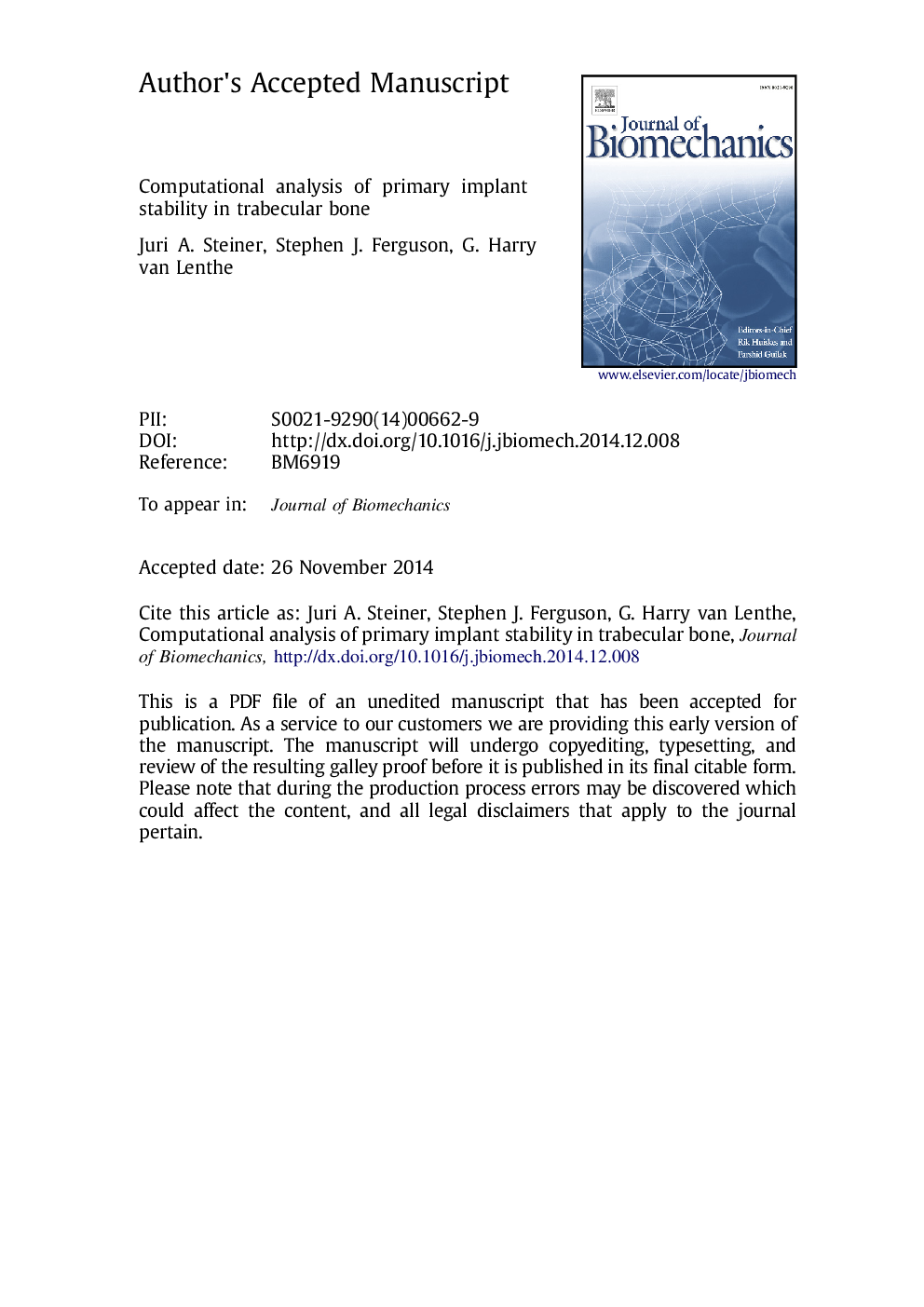| Article ID | Journal | Published Year | Pages | File Type |
|---|---|---|---|---|
| 10431591 | Journal of Biomechanics | 2015 | 27 Pages |
Abstract
Secure fixation of fractured osteoporotic bone is a serious clinical challenge mainly because the reduced mechanical competence of low-density bone hampers proper implant fixation. Recent experimental findings have shown strong evidence for a rather complex bone-implant interface contact behavior, with frictional and non-linear mechanical properties. Furthermore, the bone microarchitecture is highly diverse even within the same anatomical site of a specific individual. Due to this intrinsic variability experimental studies that could analyze in detail the contributions of screw designs and thread geometry would require a very large amount of bone specimens; this hampers finding potential improvements for implant fixation. As a complementary approach, computational methods may overcome this limitation, since the same specimen can be tested repeatedly in numerous configurations and under various loading conditions. Recent advances in imaging techniques combined with parallel computing methods have enabled the creation of high-resolution finite-element models that are able to represent bone-implant systems in great detail. Yet, the predictive power of the mechanical competence of bone-implant systems is still limited, both on the apparent level and on the local microstructural level. The current strategy in high-resolution FE models to model the bone-implant interface, employing fully bonded cube-like elements, needs to be reconsidered, refined and validated, such that it mimics more closely the actual non-linear mechanical behavior as observed in vitro in order to exploit the full potential of numeric models as an effective, complementary research method to physical in vitro models.
Related Topics
Physical Sciences and Engineering
Engineering
Biomedical Engineering
Authors
Juri A. Steiner, Stephen J. Ferguson, G. Harry van Lenthe,
